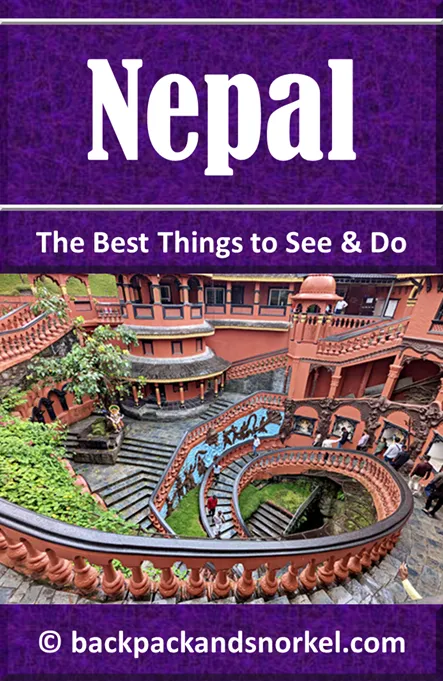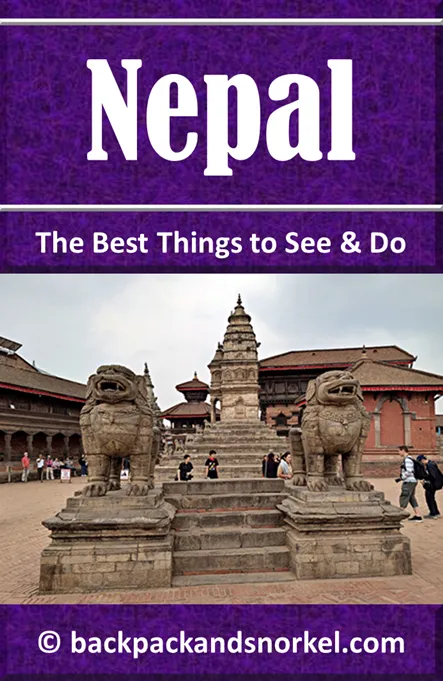Self-Guided Patan: Explore the Artistic Heart of Kathmandu Valley at Your Own Pace - Nepal Purple Travel Guide
(map, reviews)
This is Premium Content! To access it, please download our
Backpack and Snorkel Purple Travel GuideJust across the Bagmati River from central Kathmandu lies Patan, one of the oldest continuously inhabited cities in Nepal. Officially known as Lalitpur, meaning ‘City of Beauty’, Patan is a treasure trove of ancient temples, intricately carved palaces, and vibrant courtyards that showcase the rich artistry of the Newar civilization.
The name Patan is derived from the Sanskrit word Pattan, meaning ‘city’. Its official name, Lalitpur, combines lalit (meaning ‘beautiful’) and pur (meaning ‘city’). Historically, Patan was an independent kingdom until the unification of Nepal in the 18th century. It has long been known as a center of fine arts, metalwork, and religious scholarship.
Here at Backpack and Snorkel Travel Guides, we typically promote self-guided walking tours.
But we realize that not everybody likes to walk by themselves in a foreign city. So, just in case that you rather go with ab guide: NO PROBLEM! Please see the Viator tours below.
free GuruWalk tours
paid Viator tours
A Living Museum of Culture and Craftsmanship
Patan is often described as an open-air museum, as it is home to more than 1,200 Buddhist and Hindu monuments, many of which date back centuries.
Its crowning jewel is Patan Durbar Square, a UNESCO World Heritage Site that boasts a stunning collection of pagoda-style temples, royal courtyards, and ancient shrines.
Unlike the more chaotic areas of Kathmandu, Patan has a calmer, more intimate feel.
The following maps show the route that you will take today – there is a separate map for the self-guided walking tour of Patan Durbar Square:
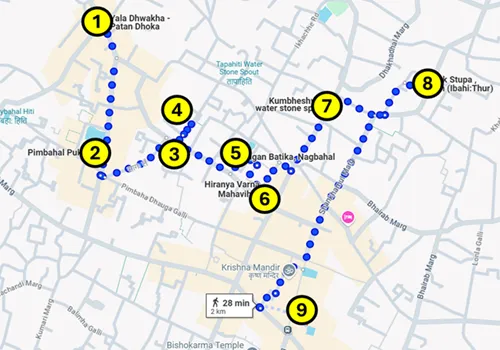
Yala Dhwakha
(map, reviews)
This is Premium Content! To access it, please download our
Backpack and Snorkel Purple Travel GuideStart your self-guided walking tour of Patan at Yala Dhwakha. You can easily get here by taxi or Pathao.
Yala Dhwakha (also known as Patan Dhoka) is one of the historic gates to the city of Patan/Lalitpur.
Detailed information can be found at our Yala Dhwakha Page


Pimbahal Pukhu
(map, reviews)
This is Premium Content! To access it, please download our
Backpack and Snorkel Purple Travel GuidePimbahal Pukhu is a peaceful water pond in busy Patan. It’s a good place to take a scenic break during your walking tour of Patan and observe local life.
Pimbahal Pukhu dates back several centuries and has served multiple purposes throughout its existence. Originally constructed as a traditional water reservoir, the pond helped supply water for household use, agriculture, and ritual purification - especially during festivals and temple activities.
Detailed information can be found at our Pimbahal Pukhu Page
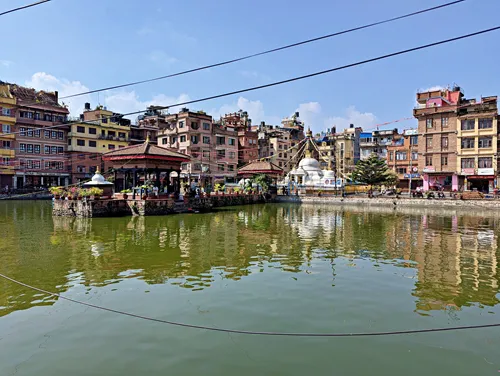
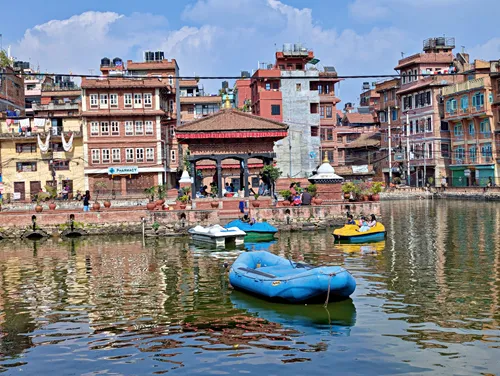
Jijivisha Cafe and Restro
(map, reviews)
This is Premium Content! To access it, please download our
Backpack and Snorkel Purple Travel GuideShould you long for a snack, or cup of coffee, then you may want to stop at Jijivisha Cafe and Restro, where you can enjoy the views of Pimbahal Pukhu from an upper floor while you eat and drink your coffee.
It is located dead center at the southern end of Pimbahal Pukhu. The restaurant has very mixed reviews on google, but our experience was excellent. The food tasted well, and the amount of food was absolutely adequate. And there staff was very nice, too.
As usual in Nepal, it took a while for the food to arrive.
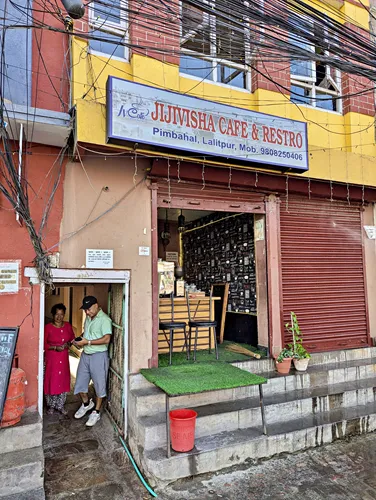
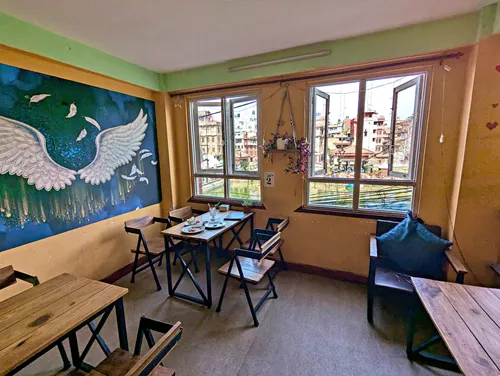
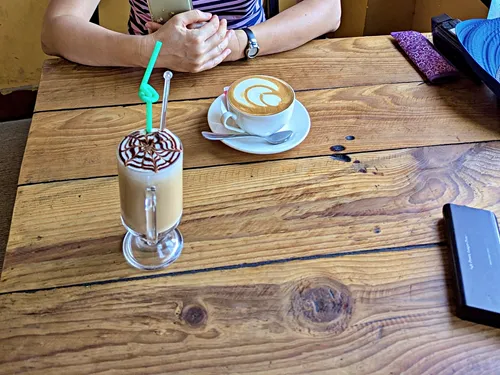

Lokakirti Mahavihar
(map, reviews)
This is Premium Content! To access it, please download our
Backpack and Snorkel Purple Travel GuideLokakirti Mahavihar is one of the 18 main monasteries of Patan. It is well known as a starting point for the historical dance of eight mother Goddesses during the Dasain festival. The monastery houses a central image of Achyov Buddha with an image of Pragya Parmita and Khadchheri on its right and left sides.
The monastery is believed to have been built between 1217 and 1255 AD.
Detailed information can be found at our Lokakirti Mahavihar Page
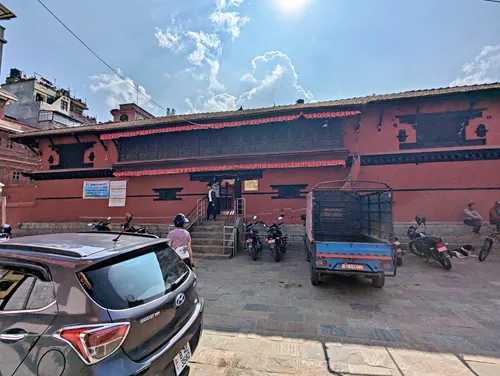

Buddha Statue
(map, reviews)
This is Premium Content! To access it, please download our
Backpack and Snorkel Purple Travel GuideNyakhachowk is a plaza in Patan that houses a beautiful Buddha statue, several mini stupas, prayer wheels, and a few religious shrines.
There don’t seem to be any recorded historical documents – this plaza just exists and waits for you to explore it.
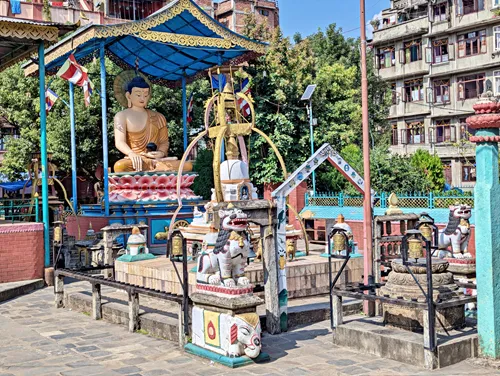

Nagbahal
(map, reviews)
This is Premium Content! To access it, please download our
Backpack and Snorkel Purple Travel GuideNagbahal is a historic Buddhist monastic courtyard with origins possibly tracing back to the 8th century. Unlike a typical monastery hidden behind walls, Nagbahal is an open and active community space where the monastery is long gone, and replaced with gorgeous Newar architecture.
Detailed information can be found at our Nagbahal Page


Hiranya Varna Mahavihar
(map, reviews)
This is Premium Content! To access it, please download our
Backpack and Snorkel Purple Travel GuideHiranya Varna Mahavihar is popularly known as the Golden Temple. It features a gilded façade, intricate wood and metal carvings, and two mystic lion statues in the front.
Believed to have been built in the 12th century, likely by King Bhaskar Varman, Hiranya Varna Mahavihar has been a vital center of Newar Vajrayana Buddhism for nearly a thousand years. Despite its age, the monastery is still active and is maintained by the local sangha (Buddhist community), which upholds a strict daily schedule of rituals, caretaking, and ceremonial duties.
Detailed information can be found at our Hiranya Varna Mahavihar Page

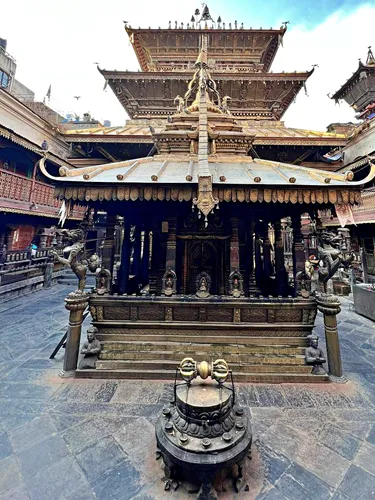
Kumbheshwor Hiti and Konti Pukhu Hiti
(map, reviews)
This is Premium Content! To access it, please download our
Backpack and Snorkel Purple Travel GuideKumbheshwor Hiti and Konti Pukhu Hiti are two traditional stone water spouts that lie directly across the street (Kwalakhu Road) from each other.
The Kumbheshwor Hiti is a sacred spring believed to be connected to the holy lake of Gosainkunda in the Himalayas, making it one of the most spiritually significant stone spouts in the Kathmandu Valley.
Detailed information can be found at our Kumbheshwor Hiti and Konti Pukhu Hiti Page
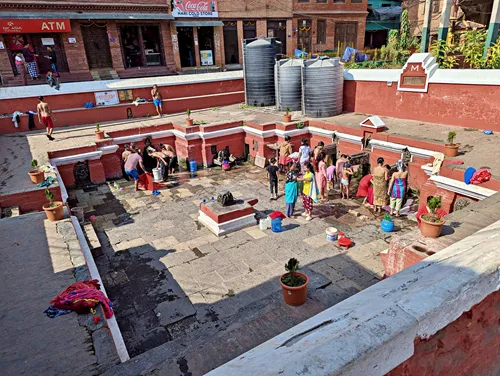
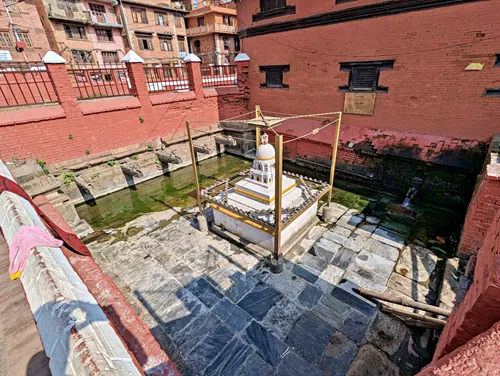
Ashok Stupa
(map, reviews)
This is Premium Content! To access it, please download our
Backpack and Snorkel Purple Travel GuideThe name Ashok Stupa comes from Emperor Ashoka, the 3rd-century BCE Mauryan ruler of India who played a pivotal role in spreading Buddhism across South Asia. According to local tradition, Ashoka visited the Kathmandu Valley with his daughter Charumati in 250 BC, and during his stay, he erected five stupas at the cardinal points of Patan and the center of Patan to mark the presence of Buddhism in the region.
Though not as grand or ornate as Boudhanath Stupa or Swayambhunath, the Ashok Stupa holds a special place in the hearts of locals. Surrounded by residential buildings and small shrines, it remains a living monument — still used by the community for prayer, meditation, and small-scale rituals. Devotees often walk around the stupa in a clockwise direction, spinning prayer wheels and reciting mantras.
Detailed information can be found at our Ashok Stupa Page
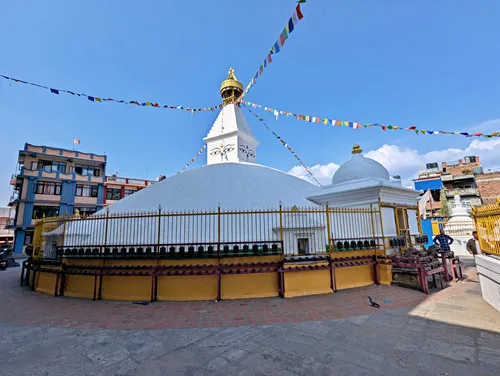

Our Self-Guided tour of the Patan Durbar Square can be found here.
Bishokarma Temple
(map, reviews)
This is Premium Content! To access it, please download our
Backpack and Snorkel Purple Travel GuideThere is no need to enter this temple – just marvel at its beautifully carved stone façade.
Bishokarma Temple, is dedicated to the Hindu deity Vishwakarma, the divine architect and engineer of the gods. Various Bishokarma temples exist throughout the Kathmandu Valley, but this is the main one.
Detailed information can be found at our Bishokarma Temple Page
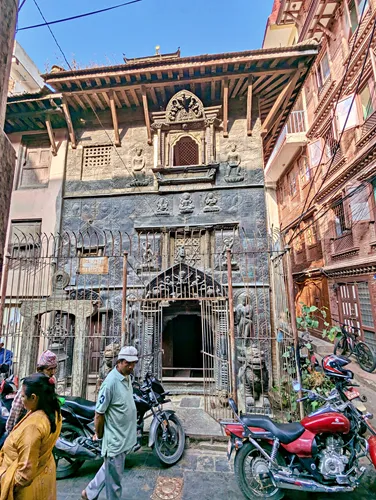
Mahabouddha Temple
(map, reviews)
This is Premium Content! To access it, please download our
Backpack and Snorkel Purple Travel GuideMahabouddha Temple, often referred to as the ‘Temple of a Thousand Buddhas’, is a Buddhist temple that is absolutely worth a visit.
We have read that there is an admission fee of Rs50 per person that enables you to also visit nearby Oku Bahal Rudra Varna Mahavihar, but we have not seen anyone charging the fee.
Construction of the Mahabouddha Temple began around 1564 with royal permission from King Mahendra Malla, led by a devoted priest named Abhaya Raj Shakya. He was inspired by a pilgrimage to Bodh Gaya in India, which is the sacred site where Siddhartha Gautama attained enlightenment.
Detailed information can be found at our Mahabouddha Temple Page
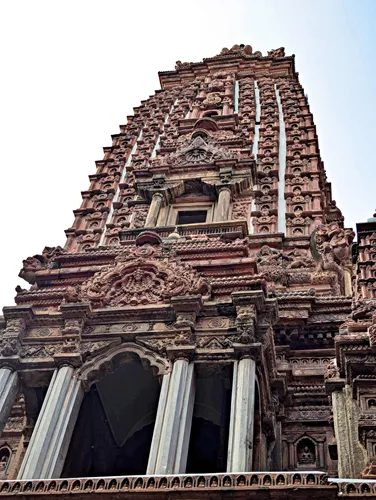
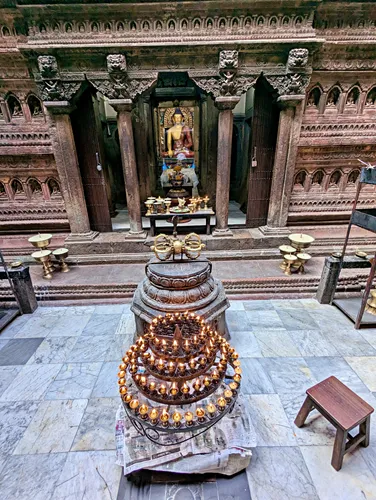
Oku Bahal Rudra Varna Mahavihar
(map, reviews)
This is Premium Content! To access it, please download our
Backpack and Snorkel Purple Travel GuideLocated only a few feet away from Mahabouddha Temple, Oku Bahal Rudra Varna Mahavihar is another temple that is absolutely worth visiting.
We have read that there is an admission fee of Rs50 per person that enables you to also visit nearby Mahabouddha Temple, but we have not seen anyone charging the fee.
The foundation of the Mahavihar is traditionally credited to King Shivadev (he ruled from 590 to 604 AD) during the Lichhavi period in the 6th century. The Lichhavi dynasty played a significant role in promoting Buddhism in the Kathmandu Valley, and many early monasteries were constructed under their patronage. However, like many ancient structures, the exact details surrounding the construction and the exact time of building are unclear. Archaeological evidence, like radiocarbon dating of certain structural elements, points to some parts of the site having 9th-century origins.
King Shivadev’s contribution is often highlighted because of his dedication to establishing Buddhist monasteries throughout the valley.
Detailed information can be found at our Oku Bahal Rudra Varna Mahavihar Page
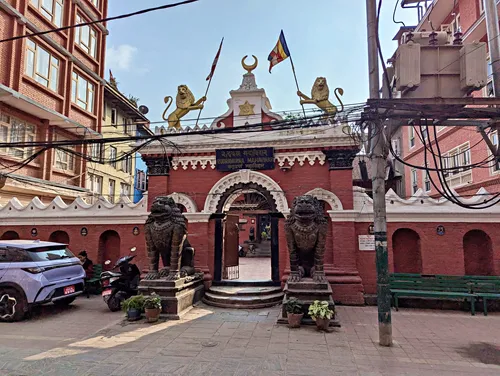

Back to your Day 3 in Nepal Itinerary
Author: Rudy at Backpack and Snorkel
Bio: Owner of Backpack and Snorkel Travel Guides. We create in-depth guides to help you plan unforgettable vacations around the world.
Other popular Purple Travel Guides you may be interested in:
Like this Backpack and Snorkel Purple Travel Guide? Pin these for later:

